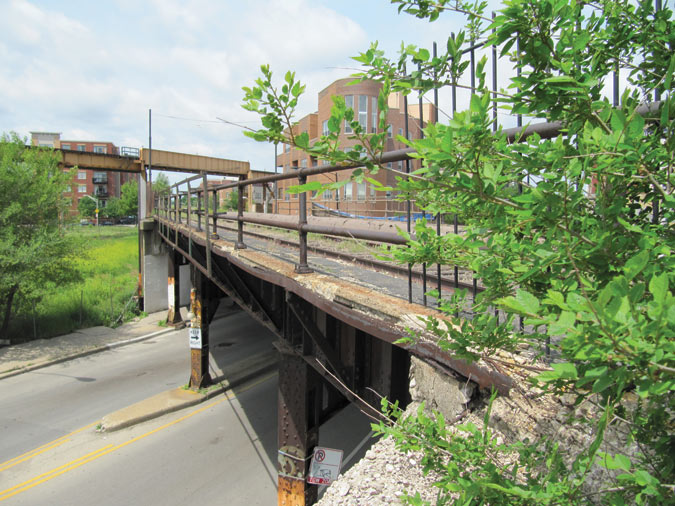
A ten-firm team will examine Chicago’s Bloomingdale Trail from a dizzying set of perspectives as well as manage public feedback about the structure’s transformation during a planning process that kicked off in early September.
The City of Chicago wants to convert the trail, a piece of rail infrastructure that cuts through several neighborhoods on the city’s Northwest Side, into a multi-use park with access points located on small open spaces adjacent to the structure.
Arup, the engineering and consulting firm, will manage the Phase One effort, overseeing a group that includes Ross Barney Architects of Chicago, Michael Van Valkenburgh Associates of New York and Cambridge, and specialists working on legal surveys, geotechnical questions, and a host of other considerations.
The city is committing major resources to designing and building out the trail. So far, the city has spent around $6.5 million on access parks, said Janet Attarian, the Chicago Department of Transportation’s sustainability coordinator. Phase One costs are estimated at $2.7 million, with the design and bidding stage running to more than $2.9 million. The city estimates construction will top out at nearly $43 million and start in 2014. Federal grants and local matches are expected to fund all three segments of the project.
At the September meeting, some of the planners tried to set the tone by begging questions rather than providing definitive answers. “Is it a park? Is it a trail? Is it a safe way to school? Is it an art installation? It’s all of these things,” said Arup’s Tom Kennedy.
|
|
||
Among the design challenges ahead are grappling with 37 bridges and viaducts, accounting for existing public murals along the corridor, and thinking how the trail will accommodate a range of users.
As part of the initial effort, the team will draw up a framework plan for the trail that the city can use as a touchstone, to ensure consistency over time. “Phase One is not when you draw the railing and you say it’s going to be a stainless steel railing,” said Attarian. "Phase One is when you set the criteria that will determine that design."
Carol Ross Barney, of Ross Barney Architects, told AN that her firm had previously thought about the project as a singular opportunity to transform a “vein through the city.” As the work ramps up, that view is changing.
“It’s actually more complicated than that—people here in these four neighborhoods have a strong sense of ownership. So basically for the last six months that we’ve been working on it, we’ve worked hard at collecting information," she said. “We’re really trying to make it smart information.”
The design team has scheduled a two-day charrette and open house in early October and will likely hold two more public meetings in December and March of next year.
During the September meeting, neighborhood residents expressed concerns about how bikers and pedestrians would share the revamped trail. Others asked how the trail would get plowed after a snowfall, about water fountains and rest rooms. A woman who lives next to the trail pleaded for the designers to "really think of the privacy of the people who live near the tracks."
Lincoln Park resident Kathy Schubert said she was amazed to see planning for the trail actually under way. "I never thought it would come to fruition in my lifetime, because it’s so expensive," she said.